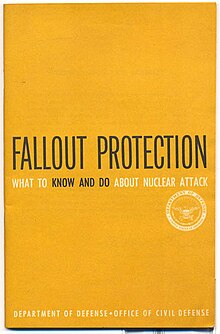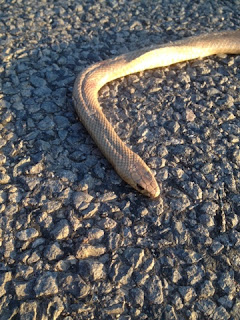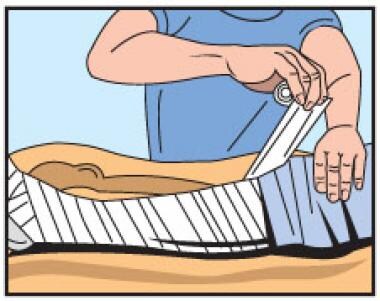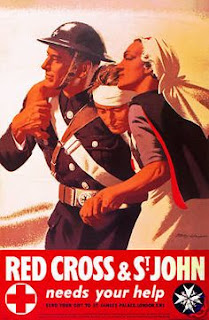I've always been immensely grateful to the high school French teacher who required us to read Albert Camus' novel The Outsider
. Probably no other book, and no other author, influenced my sixteen-year-old brain quite so much. It's in tribute to that long-ago teacher that I've translated this article revisiting the city Camus immortalised.
On the centenary of the birth of Albert Camus, the Algerian daily newspaper El-Watan returns to the places he wrote about. What has become of the city that the French writer described and cherished?
"People swim in the harbor and then go rest on the buoys. when you pass a buoy where a pretty girl is sitting, you shout to your friends 'I tell you it's a seagull'"*. When they weren't swimming, the young people amused themselves taking "long canoe trips paddling around the red and black freighters"*. Today, the port of Algiers has only commercial activity, and the boats and the rowing club are gone.
What's more, the ports are completely off limits to the public. Writer and journalist Brahim Hadj Slimane explains that -
What Camus described existed up until the 1970s. It's not like that anymore, and not just in Algiers. The young people who swam there were the children of the ordinary suburbs, as was Albert Camus in Belcourt, which was a working-class suburb at that time ... The ports were closed to the public for security reasons, and so, as in Algiers, they lost their conviviality.
El-Kettani beach, Algiers.
Next to the port, the beach of Bab El-Oued has also radically changed. Camus wrote that
The dance hall at Padovani Beach is open every day. And, in this immense rectangular box, open to the sea all along one side, the poor youngsters of the district come to dance until evening*.
More than sixty-six years later, Padovani Beach - now El-Kettani - has calmed down. The frenzied dancers have given way to families.
It's an era whose passing is mourned by architect and sociologist Lesbet Djaffar: "One could eat and dance, and students could fill their hearts with joy". As well as dancing, one could swim: "I dove into the current", explained Camus, speaking of "the swimming baths at the port", now the pool at Rua. Today on the beach, some boats rest on the sand bars, but nobody uses them. The few swimmers have masks and snorkels, while the women gossip on the stones at the waters edge.
"The French-Algerians would dance at the Padovani pools, a sort of club by the beach. It was an entirely French establishment. The girls sunbathing, the young men swimming - these were not Algerians", declares Camus specialist
Christiane Achour, professor of French Literature at the University of Cergy Pontoise (Val-d'Oise). His vision of Algiers was of a Frenchman in Algeria.
There is a noontime silence on the government square. In the shade of the trees that grow along each side, Arabs sell penny glasses of iced lemonade, perfumed with orange blossom. Their cry of 'cool, cool' echoes across the empty square*.
Less exotic and charming that in the vision of the author, Government Square - now Martyr Square - is a worksite for the expansion of a railway station. The "noonday silence" and the "deserted square" are gone.
Place des Martyrs, Algiers.
Besides, being just down from the Casbah, the square was always much better frequented than Camus would have us believe. Stalls of arts and crafts and many kiosks were set up there. "It was very busy there in the evenings during Ramadan, because the bakers were there all night", recalled Christiane Achour. "That still happens, but today it's also the depot for busses going to the outer suburbs, and almost as busy as a railway station.".
Albert Camus lived on the Rue de Lyon in Belcourt, a road better known today as 'Mohamed Belouizdad'. At Number 124 is the flat where he spent his childhood. "I don't know for a fact that he lived here, but I suppose he did. Many French people come here to take photographs", says a young man at the foot of the block of flats. Belcourt is still a working class suburb, but its cinemas - mentioned many times by Camus - have nearly all vanished.
Rue Mohamed Belouizdad, Belcourt, Algiers.
"The cinemas of the district poured a flood of theatregoers into the street", said Camus in
The Wrong Side and the Right Side. His street had no less than five cinemas. "I recall that there was a cinema on the corner just near his home", remembers Lesbet Djaffar. "At that time, not many Algerians went to the cinema, because most of the films were French. They preferred American films, which had more action". Algiers boasted about sixty cinemas in total at that time; now there are only about ten, including two called "Algeria" and "Cinematheque".
The trams and streetcars are among the most iconic parts of Camus' writing on Algiers. "Sometimes a large tram would rattle swiftly past", he wrote in the story
Between Yes and No (1937). The city had a large network of trams, split up into three large lines. Before independence, in December 1959, it was closed permanently. For Lesbet Djaffar, the tramways were a critical part of the atmosphere of the town. In 2011 the trams returned, but have not captured the city's imagination in the same way.
Today's Algerians do not wholly recognise themselves in the Algiers depicted by Camus, and perhaps they never did. But certain sensations are undeniably common to them in all ages:
Algiers and a few other privileged coastal towns open into the sky like a mouth or a wound. What one can fall in love with in Algiers is what everybody lives with: the sea, visible from every corner, a certain heaviness of the sunlight...*
* These quotations have been taken from the volume Albert Camus,
Lyrical and Critical Essays, translated by Ellen Conroy Kennedy and edited by Philip Thody (Vintage Books, New York, 1970).







































